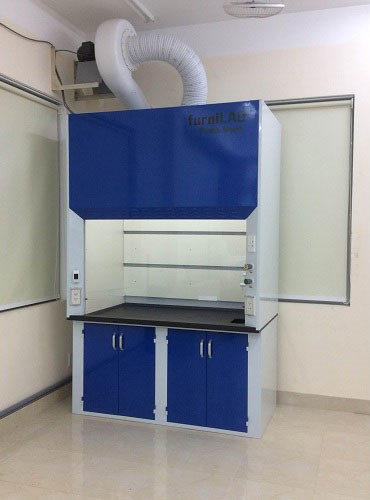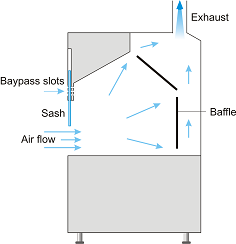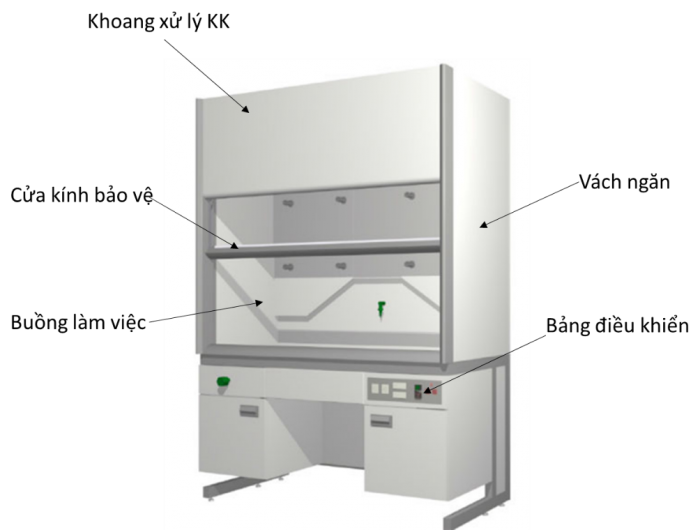Toxic Air Intake Cabinet
What is a toxic air intake cabinet?
Toxic air intake cabinets work like a type of ventilation device, it helps to remove toxic chemicals in the form of gases, dew or volatiles to protect users. It also has a fire-resistant effect and prevents chemical spills during operation.
Despite its almost identical use, the toxic air intake cabinet is not a biosecurity cabinet. It is necessary to distinguish these two devices clearly and use each device for the right purpose to avoid danger.

Classification of toxic air intake cabinets
The most common way is to classify in a way that circulates the flow of gas. Accordingly, there are two types of cabinets:
– Straw cabinet: is a type of suction cabinet connected to the ventilation system of the building. Toxic gases from the working room are sucked out, pushed into the ventilation system of the building and diluted. The toxic gas is then released into the environment. Currently, this type of cabinet is still used due to the high cost of electricity and the installation is difficult and complex.

Tủ hút ống
– Circulating suction cabinet: This type of suction cabinet is like a standalone device, offering flexibility and convenience. Toxic gases are blown through the filter, cleaned and returned to the room. Compared to straw cabinets, circulatory suction cabinets are more energy efficient and have better protection for users and the environment should be used more widely.

Circulating Suction Cabinet
In addition, toxic air intake cabinets are also classified in many other ways such as:
– According to the type of chemicals to be treated, including acid-resistant toxic air intake cabinets, Downflow cabinets, Perchloric Acid Cabinets, Radioactive Isotope Suction Cabinets and Scrubber Cabinets.
– According to the operating air flow: including bypass cabinets (constant flow of gas through cabinets and The speed of air flow through the cabinet is inversely proportional to the opening of the working door) and VAV cabinets (the air flow through the cabinet changes, the air flow rate is maintained the same).
– According to the application of cabinets: there are cabinets type A, type B and type C with the level of application for toxic substances gradually decreases.
The structure of the toxic air intake cabinet.
The toxic gas intake cabinet has a simple structure, which can be divided into 3 main parts: Stand, Working Chamber and Air Treatment Compartment. Cabinets can be made from stainless steel or powder coated steel. The front of the working compartment has glass doors made from safety glass, which can be raised up and down depending on the requirements. The control screen helps to warn too much or too little of air, the control turns on/off fans, lights and water washing systems (advanced options). With cabinets working with extremely toxic chemicals, the cabinets are pre-attached with cast iron hands, samples are isolated in the environment of the cabinet, the person who manipulates contact with chemicals through gloves, thereby ensuring absolute safety.

Application
Toxic gas intake cabinets are used in cleanroom environments to manipulate odor materials, toxic gases, reactive materials, dangerous chemicals, carcinogens, … to keep waste products (gases, vapors, smoke, etc.), prevent them from spreading into the laboratory, protecting the manipulator.





